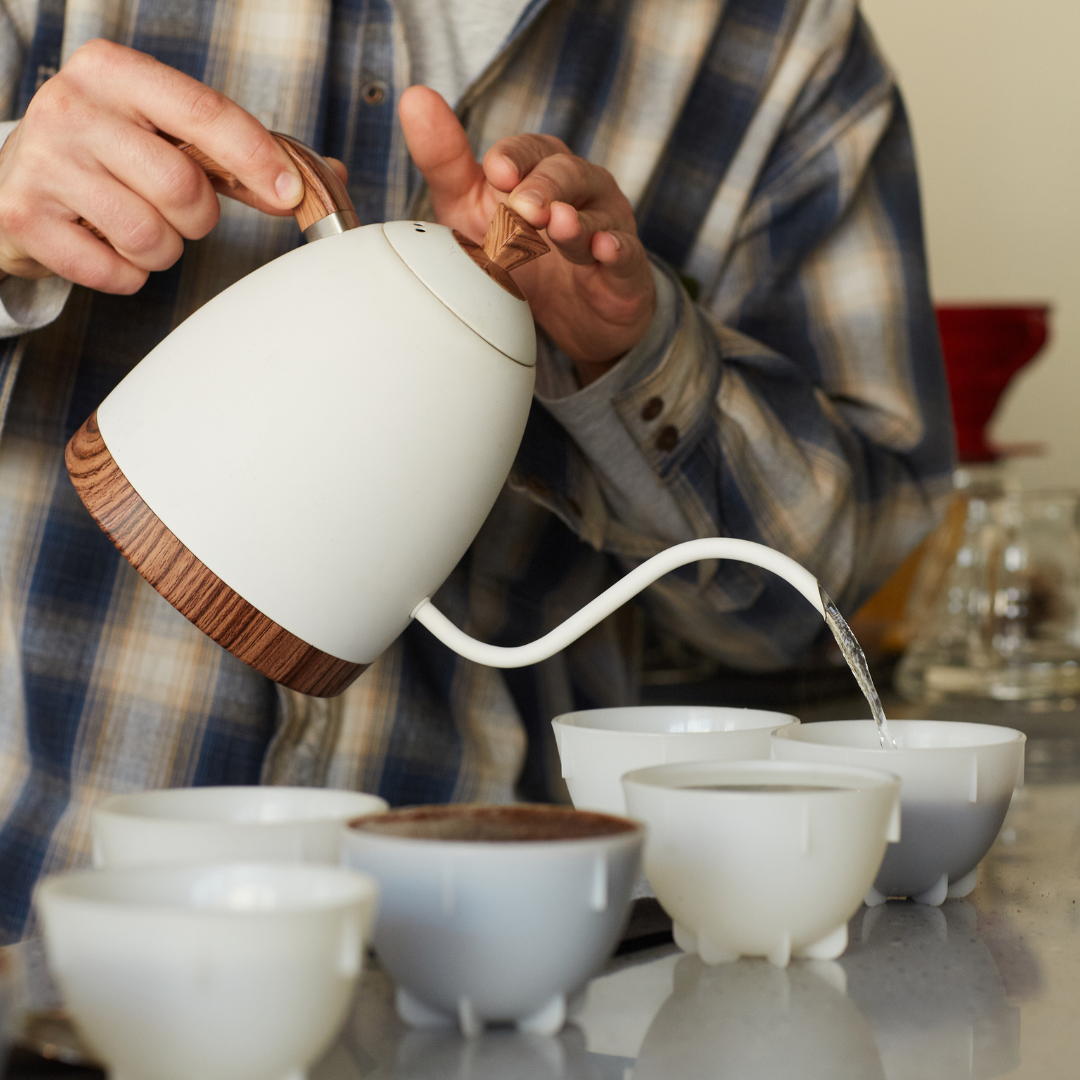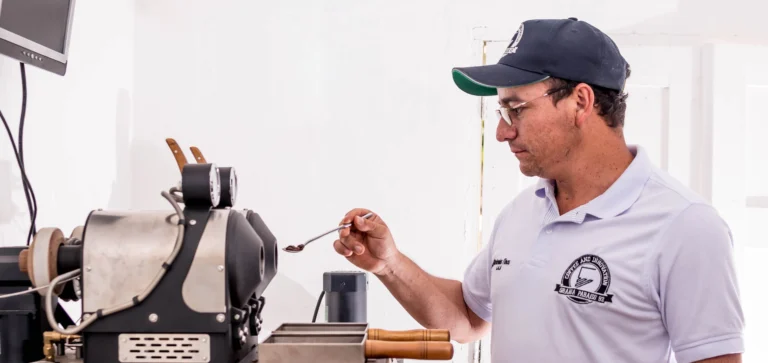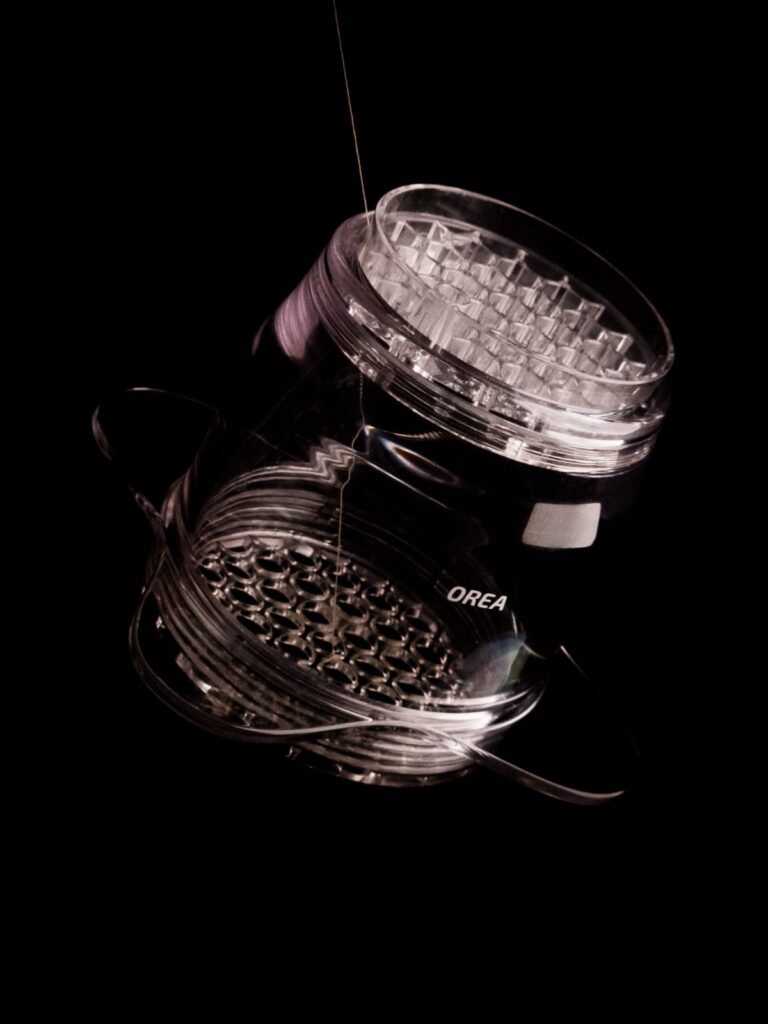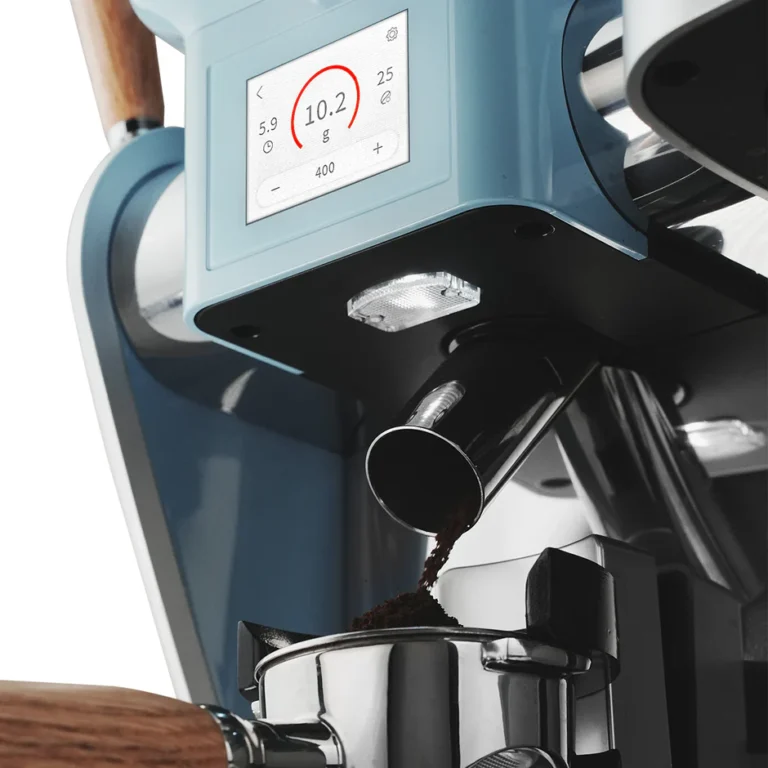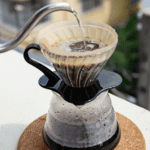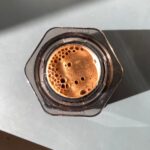Today we will talk about filter coffee brewing. Specifically with an Aeropress vs Pour Over how they differ from each other and what kind of results you’ll expect to see out of each method.
The good thing about brewing filter coffee is that there is no wrong way to do it, but there are tons of standardised ‘correct’ ways to do it. For industry professionals, these are great as a guideline but you can change these guidelines slightly to create your preferred cup of coffee.
What’s great about filter coffee is that when you’re at home, you’re not judged. It’s about how tasty the cup of coffee is to you and when we change different variables, we get different tastes. For example, changing our dose (amount of coffee), our grind size, our ratio of coffee to water, the intervals at which we pour our water, our brew time, and so much more. Each will result in a different type of brew, which can be done for the same coffee, bringing out other flavours and wonders.
Today, we will discuss the clear differences between Aeropress and pour-over coffee brewing, and hopefully, this will help you decide which method is best suited for your needs and lifestyle.
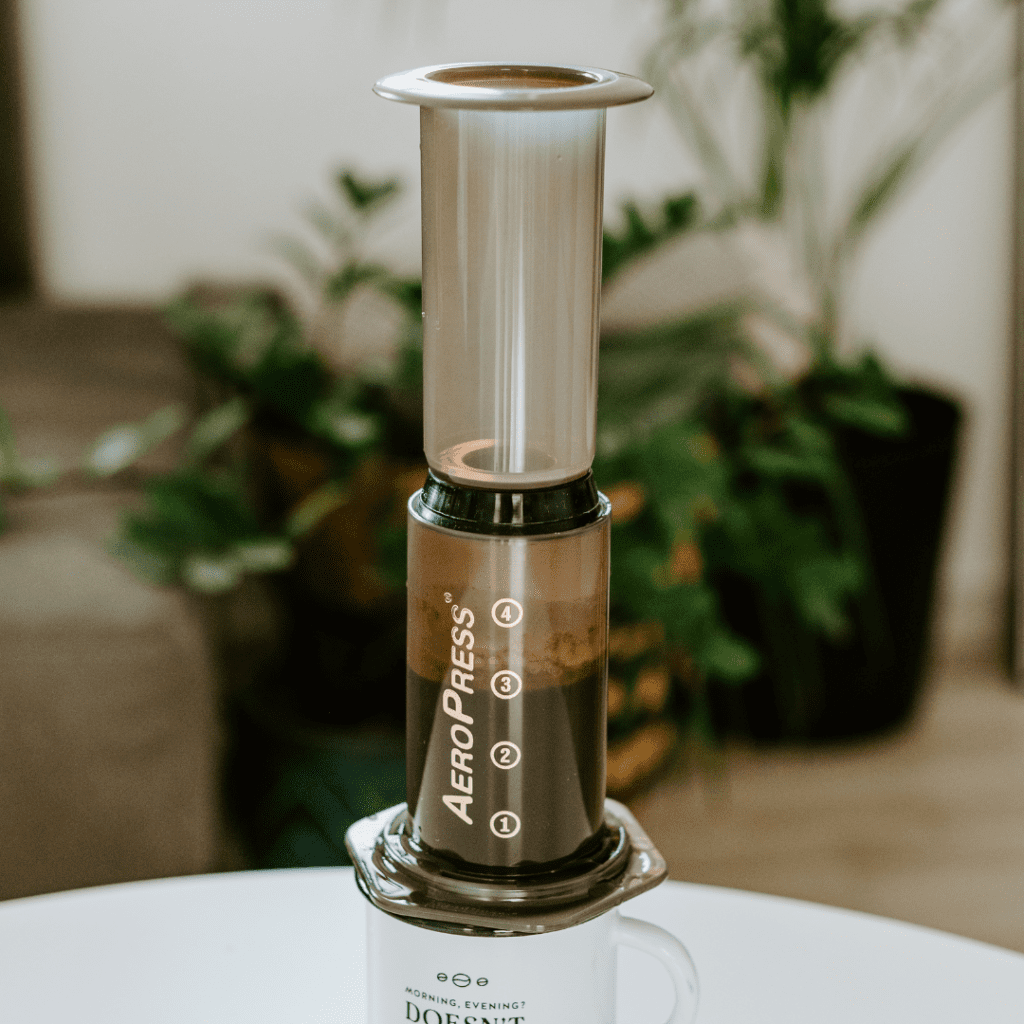
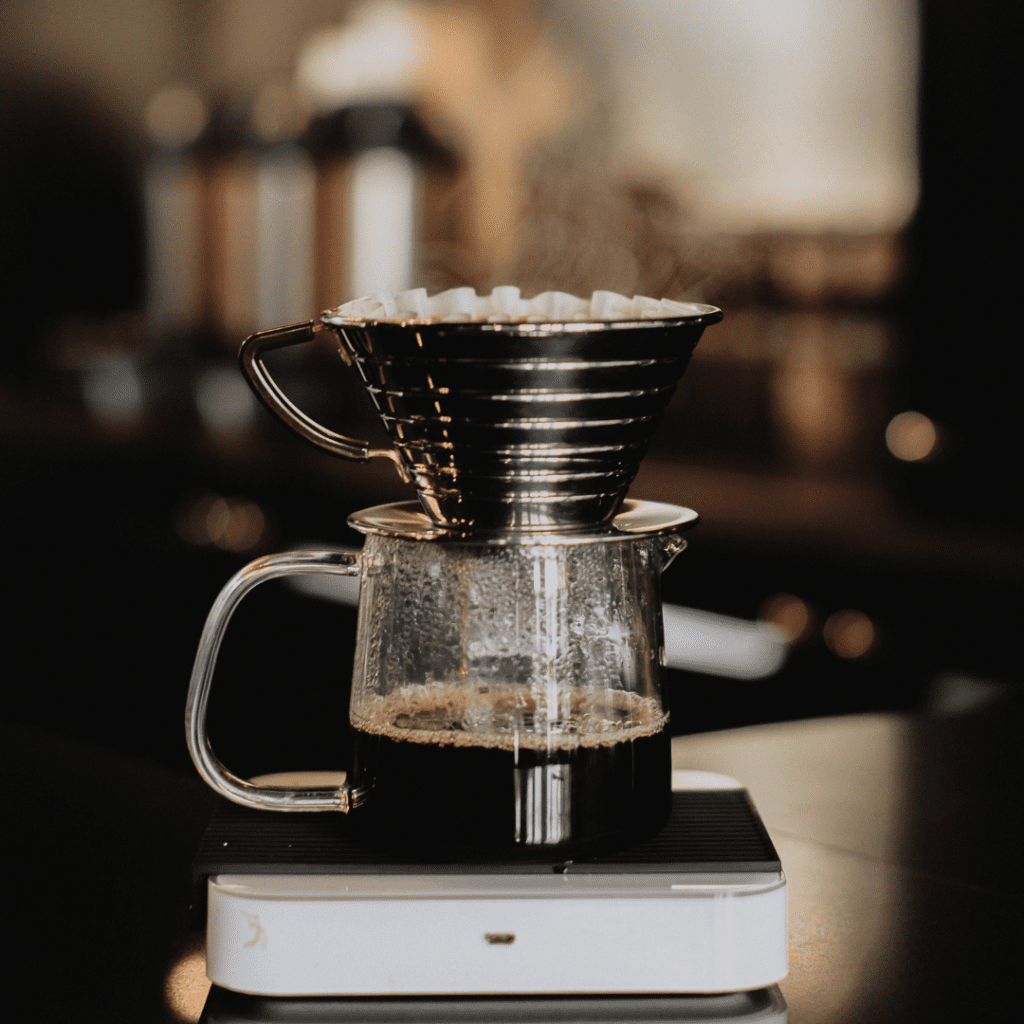
So … What is an Aeropress?
As discussed in our other article solely focusing on Aeropress coffee, How to make Aeropress Coffee, AeroPress was created in 2004 by lecturer Alan Adler, who is a retired engineering lecturer at Stanford University, with the idea of creating a coffee brewer that reduces acidity and bitterness.
With his engineering background, he initially created the brewer for his use, but as we know it today, he created something very special that we in the coffee industry call revolutionary.
Think of it this way, how many home coffee brewers are there that have been around for hundreds of years that people use every day?
The Aeropress is a new-day icon that has changed home coffee brewing forever. Now everyone can make great filter coffee at home, at the beach, in the car, literally from anywhere you can think of.
The Aeropress requires grounded coffee at a medium to fine grind in the Aeropress chamber, then you fill it with hot water (between 85 and 92 C), stirring the coffee and water, allowing it to steep in the coffee chamber. This is followed by adding the cap and flipping and plunging until the coffee is released through the filter cap. A simple, easy way to make delicious filter coffee at home or on the go, with virtually no mess, the Aeropress is a true revolution to the coffee industry and the enjoyers of great-tasting coffee. The taste of the AeroPress is expected to be more full-bodied, richer and heavier; the perfect way to start your day with your pre-morning caffeine kick — a coffee with an oomph.
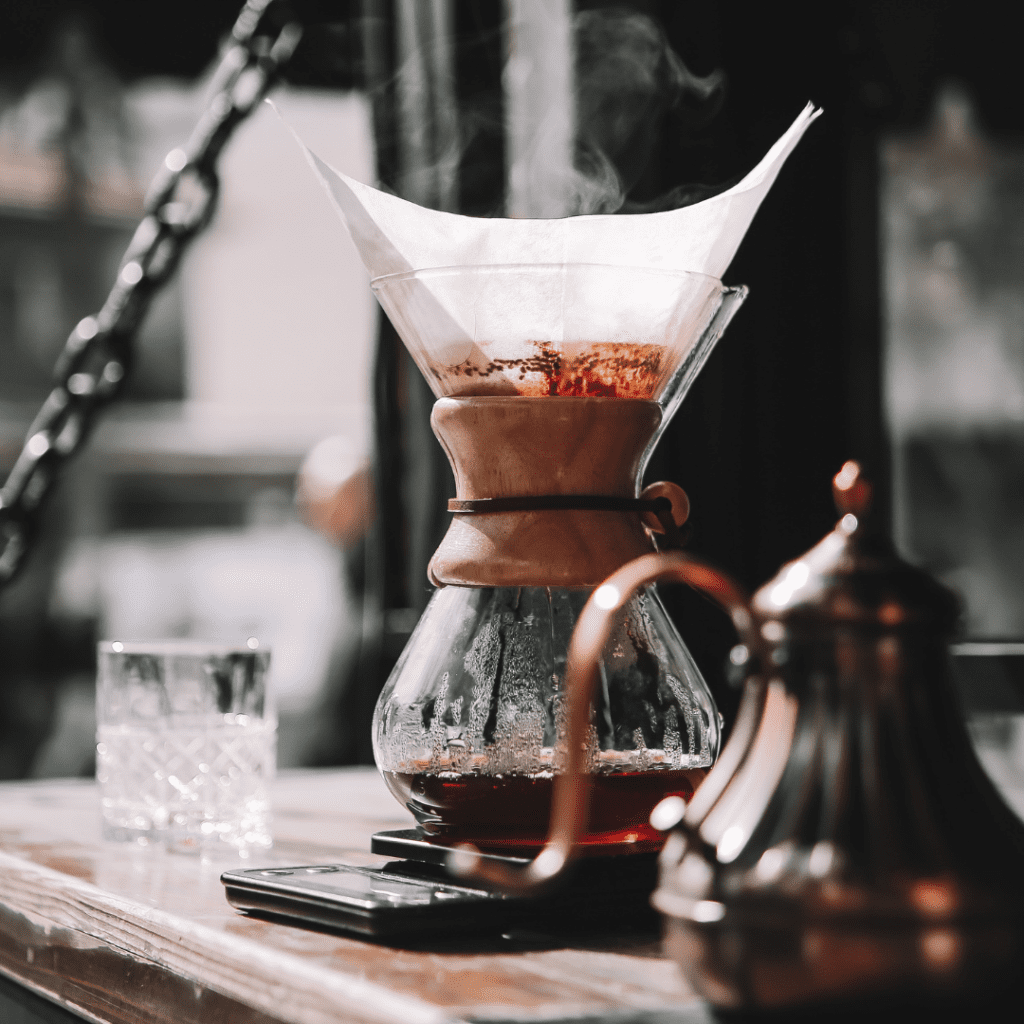
Now, let’s move on to pour-over coffee, a Caretta Coffee favourite.
The Pour-Over Coffee Method
Pour-over coffee is essentially pouring hot water on top of grounded coffee, allowing it to seep through a paper filter which extracts the oils and flavours from the ground coffee beans into a drinkable form we call ‘filter coffee.’ In my opinion, it’s the most delicious form of everyday human necessity: coffee!
In pour-over brewing, detail matters. This means dialling in on the grind size, the temperature of our filtered water (filtered water is better than household tap water; we will go through this in another post), how much water we put in our brew, how much coffee, and how long or little we brew for. To make pour-over coffee, the basic recipes are relatively easy to follow and create a delicious cup of coffee without having to over-complicate things.
If you would like to learn more about pour-over coffee and the equipment you need to make the best cups without breaking the bank, have a look at these two articles:
How to Make Pour-Over Coffee for Beginners
Pour Over Equipment on a Budget.
The Differences Between Aeropress and Pour Over Coffee
Aeropress coffee is classed as an immersion brewer and essentially immerses the ground coffee and hot water together. It is then pushed out of a filtered cap, resulting in a more full and heavy bodied cup of coffee.
Pour-over is a drip-based coffee with water poured on top of coffee more precisely and with an open hole base to the dripper, allowing the coffee to drip out quicker through the force of gravity, depending on variables such as grind size, water ratio etc,. Pour-over creates a smoother, lighter bodied cup, which is my personal favourite— a more complicated method but once mastered properly, a definite go-to in my opinion if you want a delicious, smooth and balanced black filter coffee to start your day.
Both are two of the best methods on the market for great tasting coffee. The Aeropress requires less time and variables, whilst pour-over requires more time, effort and concentration to get a nicer brew.
Both also require different types of equipment.
The AeroPress requires:
- Fresh speciality coffee ground to a medium-fine grind – you can find some of the best here
- High-quality water
- A stirrer, which comes with the aeropress.
- Filter papers, which come with the AeroPress.
- A scale – but you can easily use the numbers on the side of the AeroPress chamber, normally until the water has reached just below the top of the chamber.
- A timer (your phone is more than enough to do the job).

With pour-over, you’ll need a few more items to create the best cup of coffee:
- Fresh ground coffee – try some of the best here
- High-quality water
- A gooseneck kettle
- A scale
- A Server or Carafe
- A timer
- A dripper (such as a v60 or an origami or Kalita)
- Filter papers
You can find the best beginner pour-over equipment in our other article – Pour Over Equipment on A Budget
The aeropress is more compact and easy to move and travel with, whereas with pour-over you’ll need a bit more space in your backpack.
Overall, both are my favourite filter coffee methods, for sure. The Aeropress is my go-to when on the move, on the train, at the airport or if I’m in a hurry to get out of the house. And pour-over is my day-to-day method when I have a spare 10 minutes to brew.
So there you have it: the Aeropress vs pour-over coffee – which is better?
I hope this has helped you decide which one is best for you, and if you have now decided on your next coffee equipment purchase, be sure to check out Pour Over Coffee For Beginners and How to Make Aeropress Coffee. These posts will help you get to grips with the best techniques and recipes for each of these great brewing methods.
Until next time,
I’ll catch you on the next one!

